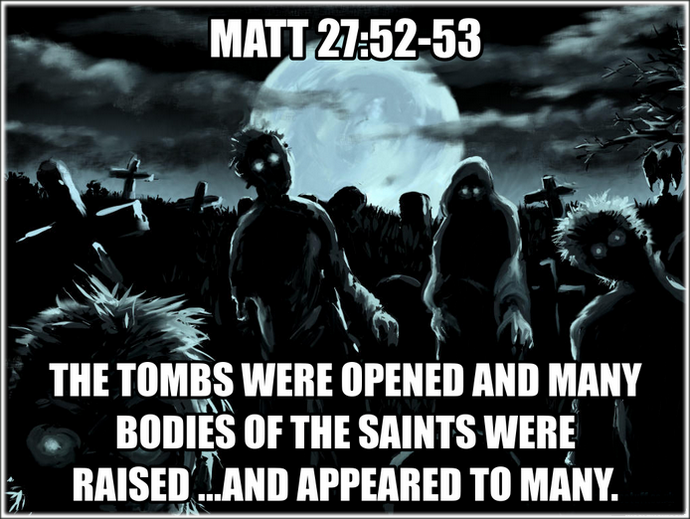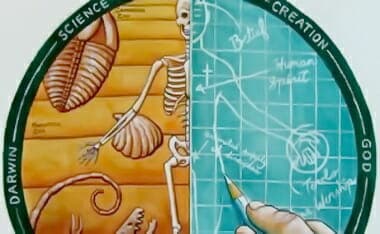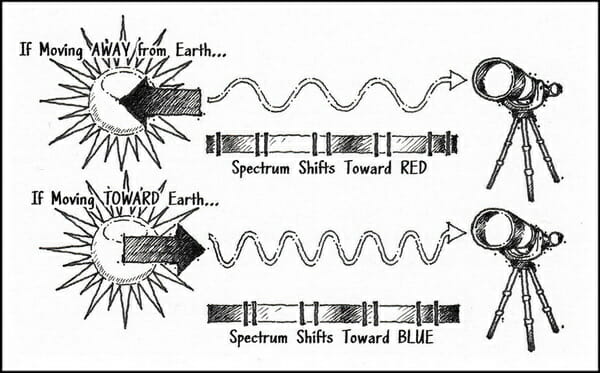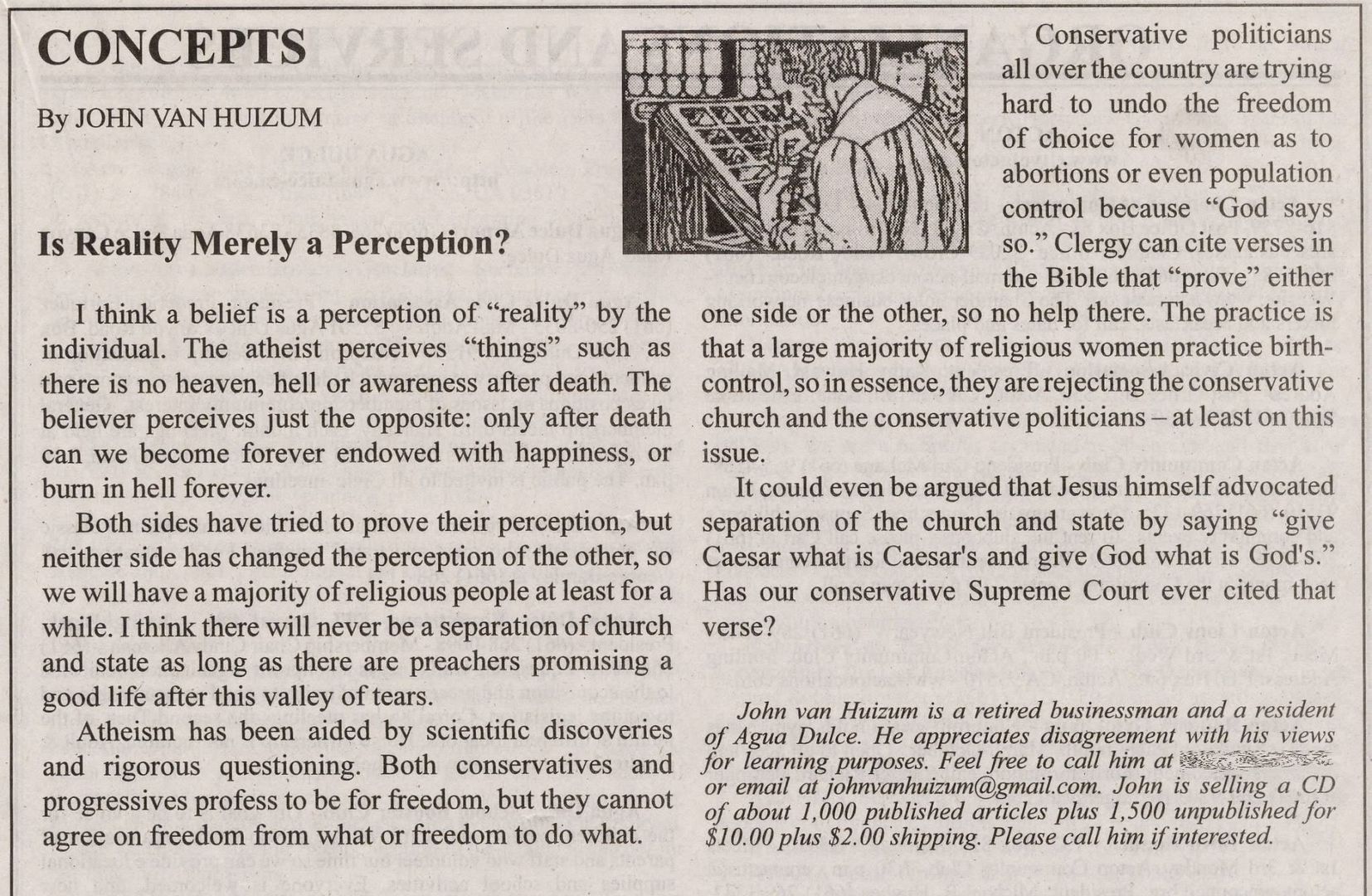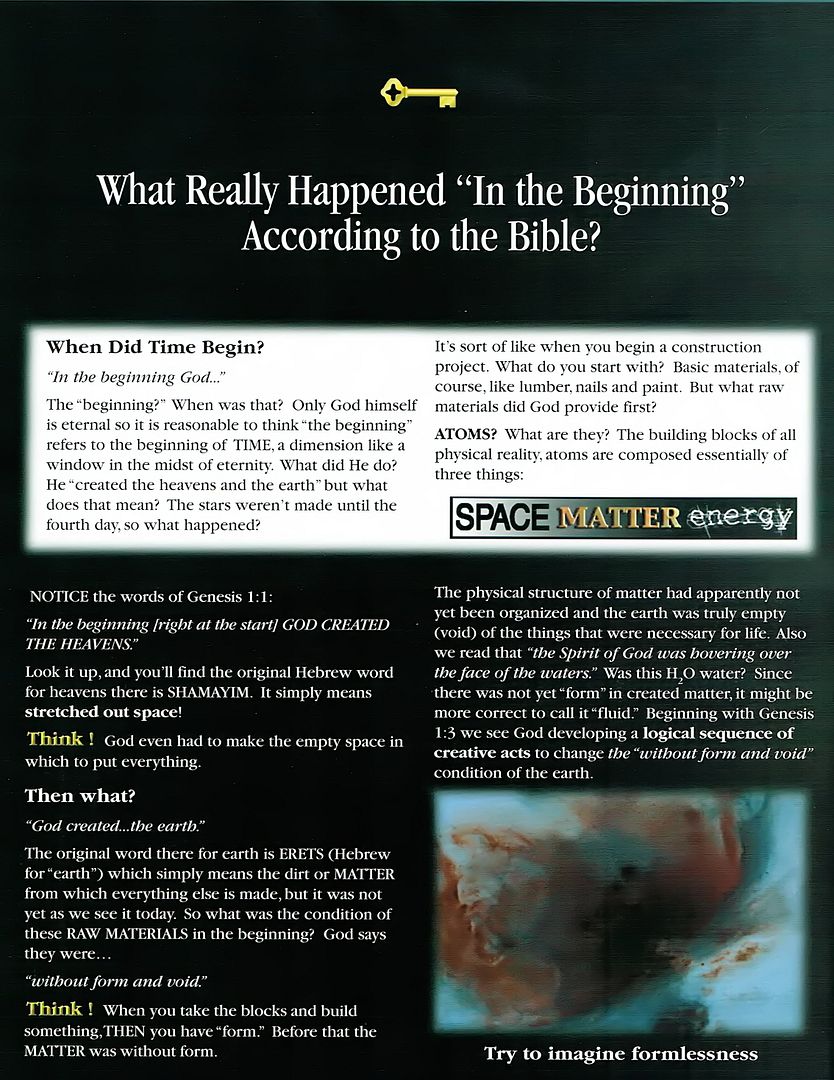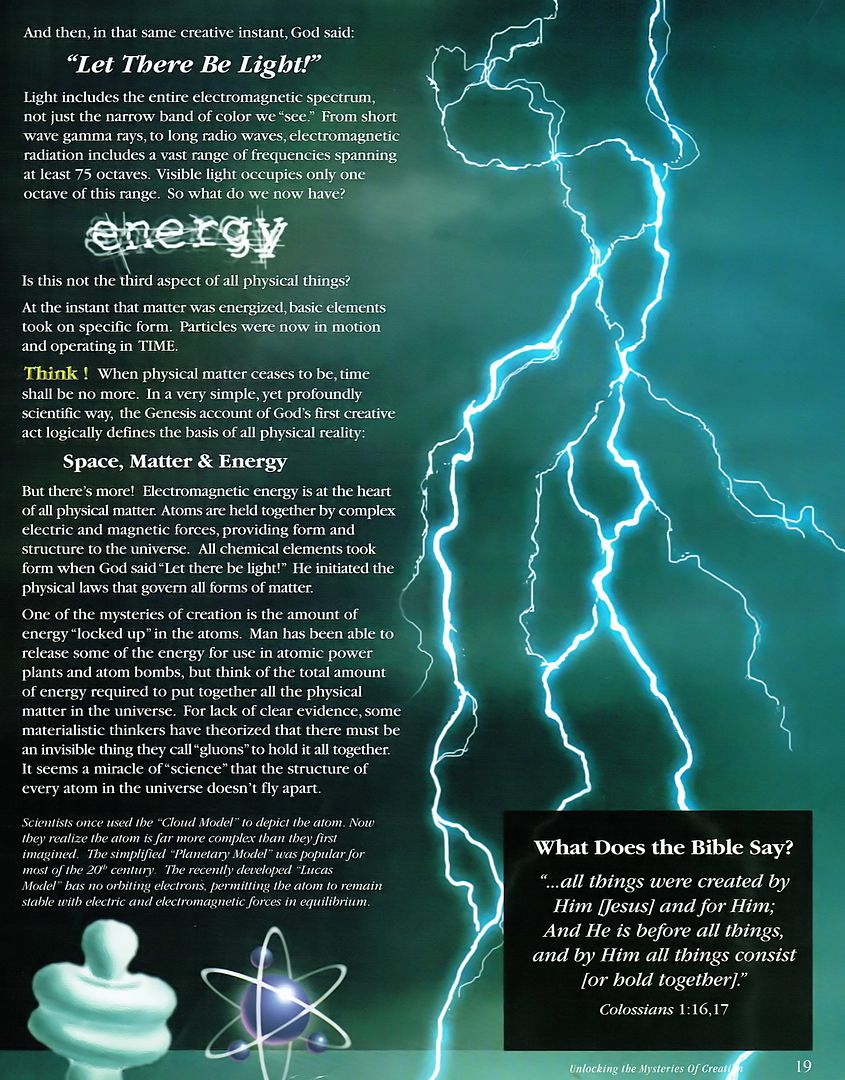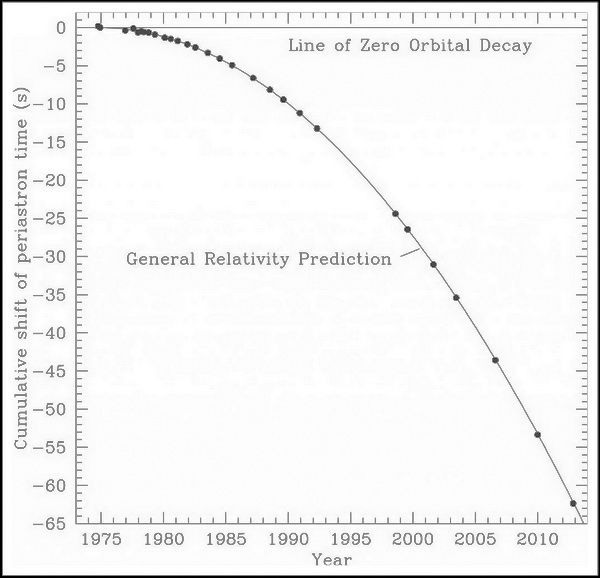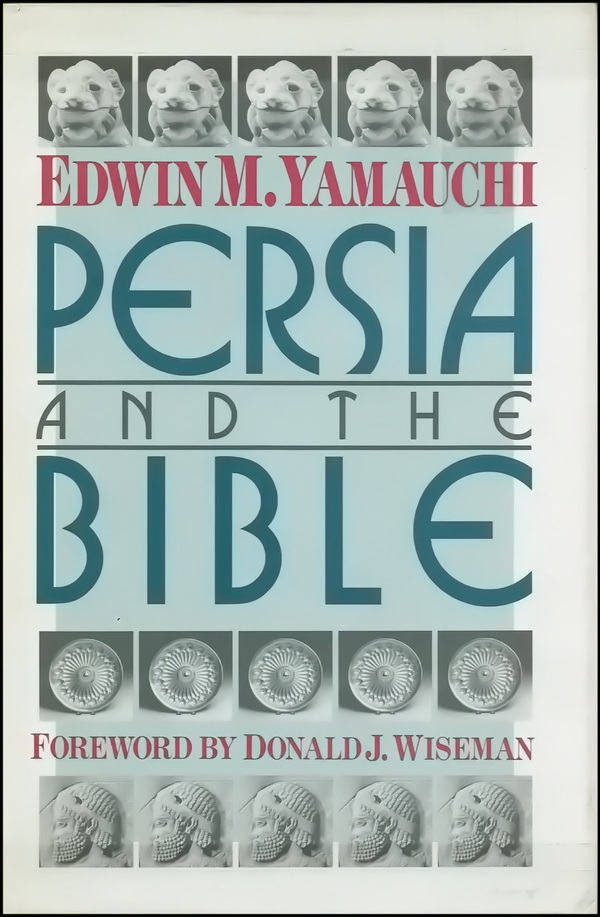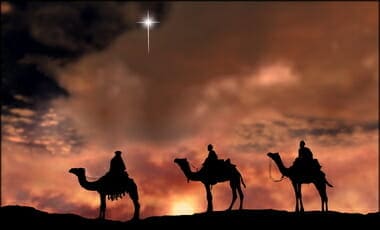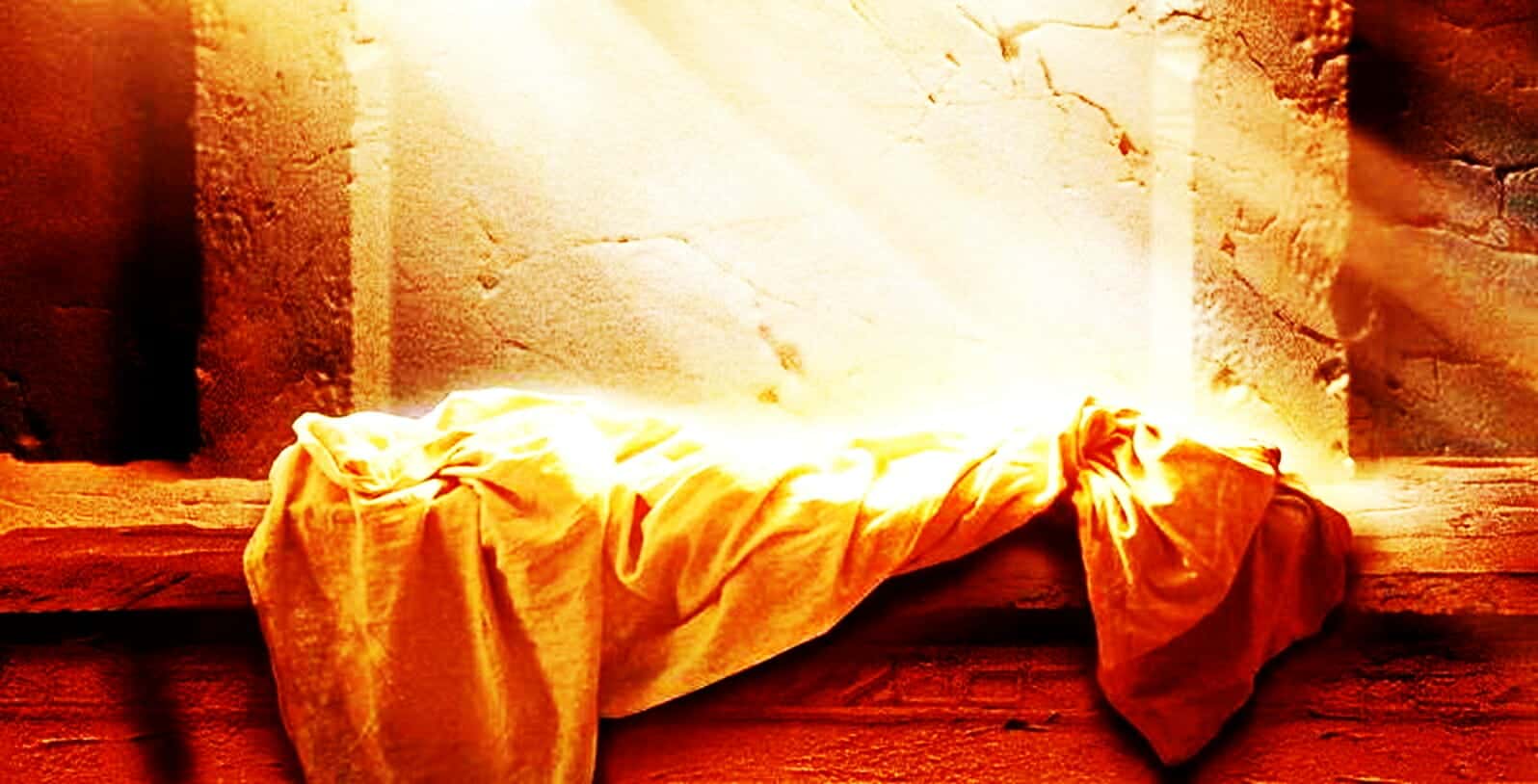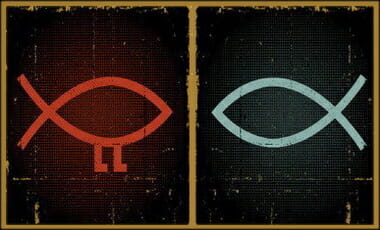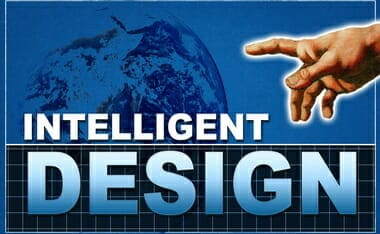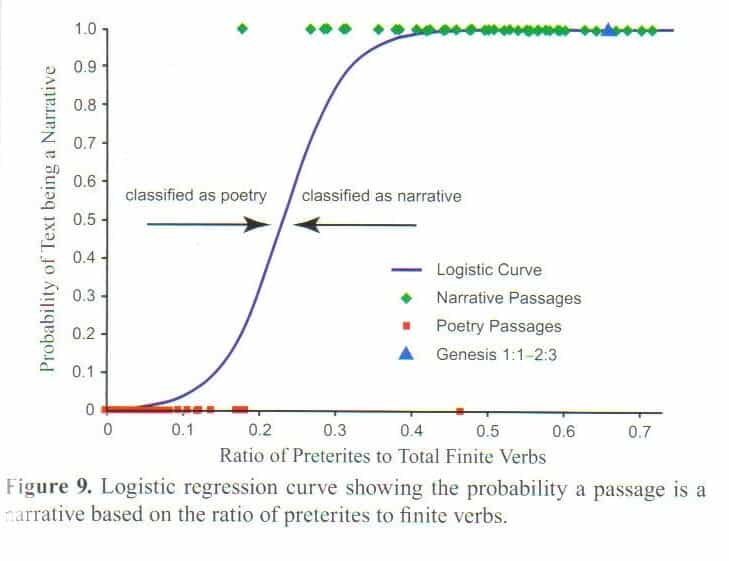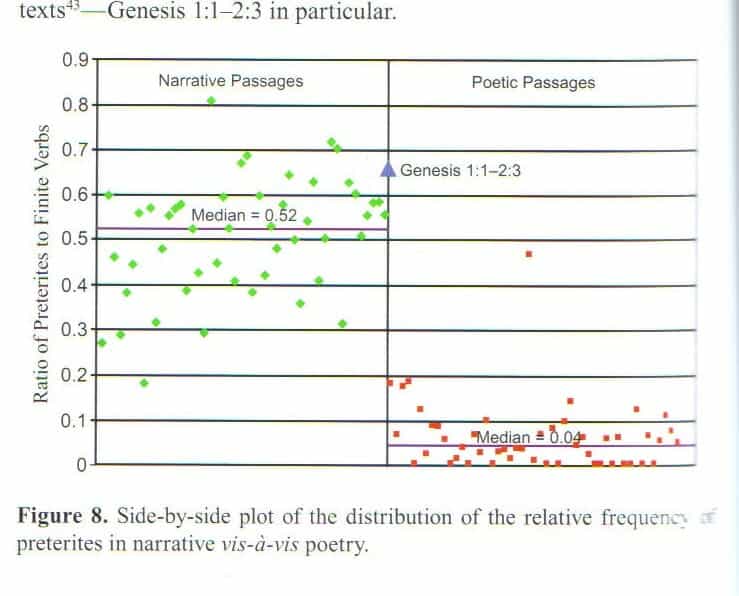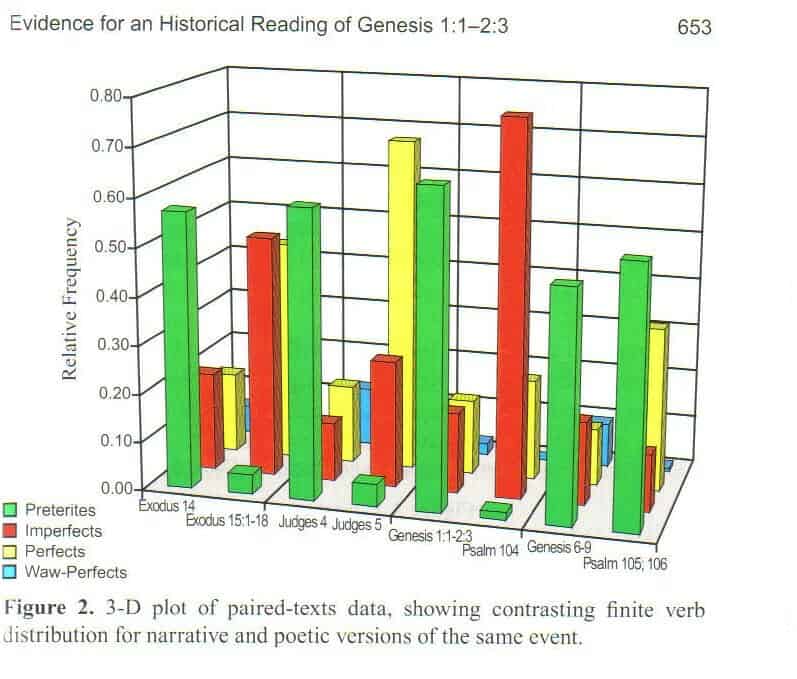Jesus is the center of history… in more ways than one!
Some Historical Reflections
Napoleon said this about Jesus:
- I know men and I tell you that Jesus Christ is no mere man. Between Him and every other person in the world there is no possible term of comparison. Alexander, Caesar, Charlemagne, and I have founded empires. But on what did we rest the creation of our genius? Upon force. Jesus Christ founded His empire upon love; and at this hour millions of men would die for Him.
H.G. Wells, the famous novelist and historian in his own right agreed:
- I am an historian, I am not a believer, but I must confess as a historian that this penniless preacher from Nazareth is irrevocably the very center of history. Jesus Christ is easily the most dominant figure in all history.
Albert Einstein adds his intellect:
- As a child I received instruction both in the Bible and in the Talmud. I am a Jew, but I am enthralled by the luminous figure of the Nazarene….No one can read the Gospels without feeling the actual presence of Jesus. His personality pulsates in every word. No myth is filled with such life.
Church historian Philip Schaff concludes:
- Jesus of Nazareth, without money and arms, conquered more millions than Alexander the Great, Caesar, Mohammed, and Napoleon; without science and learning, he shed more light on things human and divine than all philosophers and scholars combined; without the eloquence of school, he spoke such words of life as were never spoken before or since, and produced effects which lie beyond the reach of orator or poet; without writing a single line, he set more pens in motion, and furnished themes for more sermons, orations, discussions, learned volumes, works of art, and songs of praise than the whole army of great men of ancient and modern times.
Robert Hume
The nine founders among the eleven living religions in the world had characters which attracted many devoted followers during their own lifetime, and still larger numbers during the centuries of subsequent history. They were humble in certain respects, yet they were also confident of a great religious mission. Two of the nine, Mahavira and Buddha, were men so strong-minded and self-reliant that, according to the records, they displayed no need of any divine help, though they both taught the inexorable cosmic law of Karma. They are not reported as having possessed any consciousness of a supreme personal deity. Yet they have been strangely deified by their followers. Indeed, they themselves have been worshipped, even with multitudinous idols.
All of the nine founders of religion, with the exception of Jesus Christ, are reported in their respective sacred scriptures as having passed through a preliminary period of uncertainty, or of searching for religious light. Confucius, late in life, confessed his own sense of shortcomings and his desire for further improvement in knowledge and character. All the founders of the non-Christian religions evinced inconsistencies in their personal character; some of them altered their practical policies under change of circumstances.
Jesus Christ alone is reported as having had a consistent God consciousness, a consistent character himself, and a consistent program for his religion. The most remarkable and valuable aspect of the personality of Jesus Christ is the comprehensiveness and universal availability of his character, as well as its own loftiness, consistency, and sinlessness.
(Robert Hume, The World’s Living Religions [New York, NY: Charles Scribner’s Sons, 1959], 285-286.)
RESURRECTION PRESENTATIONS
The Joy of the Resurrection by Dr. Gary Habermas
A SEASONED JOURNALIST CHASES DOWN THE BIGGEST STORY IN HISTORY – Is there credible evidence that Jesus of Nazareth really is the Son of God? Retracing his own spiritual journey from atheism to faith, Lee Strobel, former legal editor of the Chicago Tribune, cross-examines a dozen experts with doctorates who are specialists in the areas of old manuscripts, textual criticism, and biblical studies. Strobel challenges them with questions like; How reliable is the New Testament? Does evidence for Jesus exist outside the Bible? Is there any reason to believe the resurrection was an actual event? Strobel s tough, point-blank questions make this bestselling book read like a captivating, fast-paced novel. But it is not fiction. It is a riveting quest for the truth about history s most compelling figure. What will your verdict be in The Case for Christ?
Lecture by Dr. Craig Hazen | “Evidence For The Resurrection Of Jesus”
Answering Skeptics
Matthew 27:52-53
While this is cute, it is how skeptics view this passage… as myth. I DO NOT.
The tombs were also opened and many bodies of the saints who had fallen asleep were raised. And they came out of the tombs after His resurrection, entered the holy city, and appeared to many. (Matthew 27:52-53, HCSB)
On this Easter and a verse at church about the first-fruits and then ending with the new heaven and new earth… I remembered a book I read from many, many years ago. So I dug it out and excerpted the portion I was thinking of. Enjoy and happy “First-fruits”!
- Grant R. Jeffrey, Heaven: The Last Frontier (Toronto, Ontario: Frontier Research Publications, 1990), 25-28.
The Firstfruits of Resurrection
The Bible uses the word “firstfruits” to describe this First Resurrection which leads to eternal life in Heaven. In Israel the Feast of Firstfruits happened in the spring of the year to celebrate the first fruits of the harvest. As the Jews brought these tokens of the bounty of the coming harvest to the Temple they were acknowledging that God was the provider of the harvest. This word “firstfruits” became a proper symbol of this first group of resurrected saints, a token of the great harvest when Jesus, the Lord of the Harvest, will come to gather the saints to meet Him in the air.
The writer of the book of Hebrews, after recounting the many acts of faith of Old Testament saints, told his readers about their life in Heaven. He declares “we are surrounded by so great a cloud of witnesses” (Hebrews 12:1). They still live! They have been transformed and are now in Paradise, watching our walk of faith. Many of those Old Testament saints participated in this first stage of the First Resurrection, when Jesus rose from the grave.
Matthew 27:52-53 describes the amazing and exciting events that happened after Jesus rose from the dead, during the Feast of the Firstfruits: “And the graves were opened; and many bodies of the saints who had fallen asleep were raised; and coming out of the graves after His Resurrection, they went into the holy city and appeared to many.”
The various writers who observed this miraculous resurrection recounted it in their histories of the day. Jesus Christ had risen from the dead and won victory over death, not only for Himself as the Son of God, but also for those saints who had died centuries before and for all who would believe in Him as their Lord and Savior for centuries to follow.
Writings by Christians of that time have been collected in the Ante-Nicene Library. They describe that more than twelve thousand of these Old Testament saints walked through Galilee for forty days, appeared in Jerusalem before many, and later ascended into Heaven when Jesus Christ ascended to His Father.
This undeniable fact of Christ’s Resurrection and the resurrection of Old Testament saints who identified themselves to many Jews created a ground swell of belief in the claims of Christ that He was the Messiah and the true Son of God. The Lord proved forever that His power of resurrection and eternal life was available to all who would receive His offer of salvation. God will not force you to accept eternal life, nor will He force you to live in Heaven if you choose not to claim this “indescribable gift” (2 Corinthians 9:15) as Lord and Savior.
These saints who rose from the dead when Christ arose were the “firstfruits” of the first resurrection to eternal life in Heaven. It is no coincidence that this seventeenth day of Nisan in A.D. 32 was the Feast of the Firstfruits. Other notable events connected with resurrection also happened on this anniversary.
On this day the ark of Noah rested on Mount Ararat and the human race was resurrected following the flood. Almost a thousand years later, on this anniversary, Moses led the people of Israel through the Red Sea to be resurrected as a nation from the bondage of Egypt. Forty years later, Israel crossed the Jordan on the seventeenth day of Nisan, and the people enjoyed the firstfruits of the Promised Land. In the sovereignty of God, He caused Jesus Christ to rise from the dead and to bring these saints with Him into new life on this same day, during the Feast of Firstfruits.
These resurrected saints had bodies that were real. Several documents from this era claim that among those raised by Jesus were the Temple priest, Simeon, who had once waited in the Temple to see the baby Jesus, and his two sons who lived in Arimathaea. The records state their resurrection was specifically investigated since they were well-known to the Sanhedrin because of their Temple service as priests. After so many centuries, it is impossible to ascertain the documentary accuracy of these ancient texts, but it is interesting to note that they confirm the details of the event which Matthew recorded in his Gospel.
These records in the Ante-Nicene Library claim that during the investigation each of the sons of Simeon was separately and simultaneously interrogated. They both told the same story, namely that Christ had appeared to them in Hades, preached to all, and that those who had earlier responded to God were miraculously given new bodies and resurrected when Christ rose from the grave.
Matthew’s record of this event is tantalising in both what it reveals and what it conceals. He states that these Old Testament saints “went into the holy city and appeared to many.” Remember that all the events involved with the death and resurrection of Jesus happened in Jerusalem during the busiest season of the year, the Feast of Passover. Every Israelite male who was capable made an effort to come to Jerusalem for the Passover festival. Deuteronomy 16:2 records this as a command of God. Each home in the holy city had upper rooms which were supplied without cost to fellow Israelites who came on these pilgrimages. Therefore, during this Feast of Passover, the population of Jerusalem had swollen to five times the normal number. Flavius Josephus, the Jewish historian, says in his Jewish Wars that, according to Roman records, the number of sheep sacrificed during the Passover was 256,500. Since one sheep would serve as a sacrifice for five people, the conclusion is that during the time of Christ up to 1,250,000 people would come to the city during Passover instead of the usual 250,000 city dwellers.
Both the New Testament and letters of first-century Christians record that these resurrected saints identified themselves to the people as historical, biblical characters. With 1,000,000 visitors already in the city, obviously these resurrected saints must have appeared different in some way from other men, or they would simply have been lost in the crowd. Possibly their faces were transfigured with God’s reflected glory as the faces of Moses and Elijah were on the Mount of Transfiguration.
Those saints who rose with Christ did not die again, according to the writings of the first century. They were raptured to Heaven when Christ was raptured. These saints are now enjoying a “better that is, a heavenly country…for He has prepared a city for them” (Hebrews 11:16). These raptured believers are the firstfruits of the first resurrection, which is “the resurrection of life” (John 5:29).
Paul described this resurrection in his first epistle to the church at Thessalonica: “If we believe that Jesus died and rose again, even so God will bring with Him those who sleep in Jesus” and if we are still alive on earth, “we who are alive and remain shall be caught up together with them in the clouds to meet the Lord in the air. And thus we shall always be with the Lord” (4:14,17) in eternal life in the New Jerusalem forever. The rapture of the saints will be discussed in greater detail in the next chapter. Those who miss the first resurrection will also rise again, but they will partake of the dreaded second resurrection, which is a spiritual, eternal death in the Lake of Fire (Revelation 20:15).
Some Early Church Father’s Take:
This gem comes from BIBLICAL HERMENEUTICS – Ask A Question section
It is defended regularly by Early church fathers such as:
Ignatius to the Trallians (c. AD 70-115)
- “For Says the Scripture, ‘May bodies of the saints that slept arose,’ their graves being opened. He descended, indeed, into Hades alone, but He arose accompanied by a multitude” (chap. Ix, The Ante-Nicene Fathers, vol. I, p. 70).
Ignatius to the Magnesians (c. AD 70-115)
- “…[T]herefore endure, that we may be found the disciples of Jesus Christ, our only Master—how shall we be able to live apart from Him, whose disciples the prophets themselves in the Spirit did wait for Him as their Teacher? And therefore He who they rightly waited for, being come, raised them from the dead” [Chap. IX] (Alexander Roberts and James Donaldson, eds. The Ante-Nicene Fathers, vol. I (1885). Reprinted by Grand Rapids, MI: Eerdmans, p. 62. Emphasis added in all these citations).
Irenaeus (c. AD 120-200)
- “…He [Christ] suffered who can lead those souls aloft that followed His ascension. This event was also an indication of the fact that when the holy hour of Christ descended [to Hades], many souls ascended and were seen in their bodies” (Fragments from the Lost Writings of Irenaeus XXVIII, Ante-Nicene Fathers, vol. I, Alexander Roberts, ibid., 572-573).
Clement of Alexandria (c. AD 155-200)
- “‘But those who had fallen asleep descended dead, but ascended alive.’ Further, the Gospel says, ‘that many bodies of those that slept arose,’—plainly as having been translated to a better state” (Alexander Roberts, ed. Stromata, Ante-Nicene Fathers, vol. II, chap. VI, 491).
This does not include the *multiple times the phrase was quoted by later church Fathers (Tertullian, Hippolytus, Origen, Cyril, etc). If one suggests that it was added to the text, they must first grapple with its extended use in these and other very early documents and decide how an error was placed within the text so early in transmission.
The below is most likely where the above responder got his quotes from:
*TO WIT…
This comes by way of an excellent dealing with the topic/Scripture, DEFENDING INERRANCY — via Dr. Norman Geisler titled:
(Emphasis in the original) BTW, this section is titled: “A Survey Of The Great Teachers Of The Church On The Passage,” as, “early Church Fathers” are not the only persons listed below.
Tertullian (AD 160-222)
- The Father of Latin Christianity wrote: “’And the sun grew dark at mid-day;’ (and when did it ‘shudder exceedingly’ except at the passion of Christ, when the earth trembled to her centre, and the veil of the temple was rent, and the tombs burst asunder?) ‘because these two evils hath My People done’” (Alexander Roberts, ed. An Answer to the Jews, Chap XIII, Ante-Nicene Fathers, vol. 3, 170).
Hippolytus (AD 170-235)
- “And again he exclaims, ‘The dead shall start forth from the graves,’ that is, from the earthly bodies, being born again spiritual, not carnal. For this he says, is the Resurrection that takes place through the gate of heaven, through which, he says, all those that do not enter remain dead” (Alexander Roberts, Ante-Nicene Fathers, vol. 5, The Refutation of All Heresy, BooK V, chap. 3, p. 54). The editor of the Ante-Nicene Fathers footnotes this as a reference to the resurrection of the saints in Matthew 27:52, 53 (in Note 6, p. 54.), as indeed it is.
Origen (AD 185-254)
- Despite the fact that Origen was known for his Neoplatonic spritualizing of some biblical texts, Origen declared that Matthew 27 spoke of a literal historical resurrection of these saints. He wrote: “Now to this question, although we are able to show the striking and miraculous character of the events which befell Him, yet from what other source can we furnish an answer than the Gospel narratives, which state that ‘there was an earth quake, and that the rock were split asunder, and the tombs were opened, and the veil of the temple was rent in twain from top to bottom, an the darkness prevailed in the day-time, the sun failing to give light’” (Against Celsus, Book II, XXXIII. Alexander Roberts, ed. Ante-Nicene Fathers, vol. 4, 444-445).
- “But if this Celsus, who, in order to find matter of accusation against Jesus and the Christians, extracts from the Gospel even passages which are incorrectly interpreted, but passes over in silence the evidences of the divinity of Jesus, would listen to divine portents, let him read the Gospel, and see that even the centurion, and they who with him kept watch over Jesus, on seeing the earthquake, and the events that occurred [viz., the resurrection of the saints], were greatly afraid, saying, ‘This man was the Son of God’” (Ibid., XXVI, p. 446).
Cyril of Jerusalem (c. AD 315-c. 386)
- Early Fathers in the East also verified the historicity of the Matthew text. Cyril of Jerusalem wrote: “But it is impossible, some one will say, that the dead should rise; and yet Eliseus [Elisha] twice raised the dead,–when he was live and also when dead…and is Christ not risen? … But in this case both the Dead of whom we speak Himself arose, and many dead were raised without having even touched Him. For many bodies of the Saints which slept arose, and they came out of the graves after His Resurrection, and went into the Holy City, (evidently this city in which we now are,) and appeared to many” (Catechetical Lectures XIV, 16, Nicene Fathers, Second Series, vol. 7, p. 98).
- Further, “I believe that Christ was also raised from the dead, both from the Divine Scriptures, and from the operative power even at this day of Him who arose,–who descended into hell alone, but ascended thence with a great company for He went down to death, and many bodies of the saints which slept arose through Him” (ibid., XIV, 18, vol. 7, p. 99).
Gregory of Nazianzus (c. AD 330-c. 389)
- “He [Christ] lays down His life, but He has the power to take it again; and the veil rent, for the mysterious doors of Heaven are opened;5 the rocks are cleft, the dead arise. He dies but he gives life, and by His death destroys death. He is buried, but He rises again. He goes down to Hell, but He brings up the souls; He ascends to Heaven, and shall come again to judge the quick and the dead, and to put to the test such words are yours” (Schaff, ibid., vol. VII, Sect XX, p. 309).
Jerome (AD 342-420)
- Speaking of the Matthew 27 text, he wrote: “It is not doubtful to any what these great signs signify according to the letter, namely, that heaven and earth and all things should bear witness to their crucified Lord” (cited in Aquinas, Commentary on the Four Gospels, vol. I, part III: St. Matthew (Oxford: John Henry Parker, 1841), 964.
- “As Lazarus rose from the dead, so also did many bodies of the Saints rise again to shew forth the Lord’s resurrection; yet notwithstanding that the graves were opened, they did not rise again before the Lord rose, that He might be the first-born of the resurrection from the dead” (cited by Aquinas, ibid., 963).
Hilary of Poitiers (c. AD 315-c.357)
- “The graves were opened, for the bands of death were loosed. And many bodies of the saints which slept arose, for illuminating the darkness of death, and shedding light upon the gloom of Hades, He robbed the spirits of death” (cited by Aquinas, ibid., 963).
Chrysostom (AD 347-407)
- “When He [Christ] remained on the cross they had said tauntingly, He saved others, himself he cannot save. But what He should not do for Himself, that He did and more than that for the bodies of the saints. For if it was a great thing to raise Lazarus after four days, much more was it that they who had long slept should not shew themselves above; this is indeed a proof of the resurrection to come. But that it might not be thought that that which was done was an appearance merely, the Evangelist adds, and come out of the graves after his resurrection, and went into the holy city, and appeared unto many” (cited by Aquinas, ibid., 963-964).
St. Augustine (AD 354-430)
- The greatest scholar at the beginning of the Middle Ages, St. Augustine, wrote: “As if Moses’ body could not have been hid somewhere…and be raised up therefrom by divine power at the time when Elias and he were seen with Christ: Just as at the time of Christ’s passion many bodies of the saints arose, and after his resurrection appeared, according to the Scriptures, to many in the holy city” (Augustine, On the Gospel of St. John, Tractate cxxiv, 3, Philip Schaff, Nicene and Post-Nicene Fathers, vol. VII, 448).
- “Matthew proceeds thus: ‘And the earth did quake, and the rocks rent; and the graves were opened; and many bodies of the saints which slept arise, and come out of the graves after the resurrection, and went into the holy city, and appeared unto many.’ There is no reason to fear that these facts, which have been related only by Matthew, may appear to be inconsistent with the narrative present by any one of the rest [of the Gospel writers)…. For as the said Matthew not only tells how the centurion ‘saw the earthquake,’ but also appends the words [in v. 54], ‘and those things that were done’…. Although Matthew has not added any such statement, it would still have been perfectly legitimate to suppose, that as many astonishing things did place at that time…, the historians were at liberty to select for narration any particular incident which they were severally disposed to instance as the subject of the wonder. And it would not be fair to impeach them with inconsistency, simply because one of them may have specified one occurrence as the immediate cause of the centurion’s amazement, while another introduces a different incident” (St. Augustine, The Harmony of the Gospels, Book III, chap. xxi in Schaff, ibid., vol. VI, p. 206, emphasis added).
St. Remigius (c. 438-c. 533) “Apostle of the Franks”
- “But someone will ask, what became of those who rose again when the Lord rose. We must believe that they rose again to be witnesses of the Lord’s resurrection. Some have said that they died again, and were turned to dust, as Lazarus and the rest whom the Lord raised. But we must by no means give credit to these men’s sayings, since if they were to die again, it would be greater torment to them, than if they had not risen again. We ought therefore to believe without hesitation that they who rose from the dead at the Lord’s resurrection, ascended also into heaven together with Him” (cited in Aquinas, ibid., 964).
Thomas Aquinas (1224-1274)
- As Augustine was the greatest Christian thinker at the beginning of the Middle Ages, Aquinas was the greatest teacher at the end. And too he held to the historicity of the resurrection of the saints in Matthew 27, as is evident from his citations from the Fathers (with approval) in his great commentary on the Gospels (The Golden Chain), as all the above Aquinas references indicate, including Jerome, Hilary of Poitiers, Chrysostom, and Remigius (see Aquinas, ibid., 963-964).
John Calvin (1509-1564)
The chain of great Christian teachers holding to the historicity of this text continued into the Reformation and beyond. John Calvin wrote:
- Matt. 27.52. And the tombs were opened. This was a particular portent in which God testified that His Son had entered death’s prison, not to stay there shut up, but to lead all free who were there held captive…. That is the reason why He, who was soon to be shut in a tomb opened the tombs elsewhere. Yet we may doubt whether this opening of the tombs happened before the resurrection, for the resurrection of the saints which is shortly after added followed in my opinion the resurrection of Christ. It is absurd for some interpreters to image that they spent three days alive and breathing, hidden in tombs. It seems likely to me that at Christ’s death the tombs at once opened; at His resurrection some of the godly men received breath and came out and were seen in the city. Christ is called the Firstborn from the dead (1 Cor. 15:20; Col. 1:18)…. This reasoning agrees very well, seeing that the breaking of the tombs was the presage of new life, and the fruit itself, the effect, appeared three days later, as Christ rising again led other companions from the graves with Himself. And in this sign it was shown that neither His dying nor His resurrection were private to himself, but breathe the odour of life into all the faithful (Calvin’s New Testament Commentaries, trans. A. W. Morrison. Eds. David and Thomas Torrance. Wm. B. Eerdmans, 1972, vol. 3, pp. 211-212).
CONCLUDING COMMENTS
Of course, there are some aspects of this Matthew 27 text of the saints on which the Fathers were uncertain. For example, there is the question as to whether the saints were resurrected before or after Jesus was and whether it was a resuscitation to a mortal body or a permanent resurrection to an immortal body. However, there is no reason for serious doubt that all the Fathers surveyed accepted the historicity of this account. Their testimony is very convincing for many reasons:
First, the earliest confirmation as to the historical nature of the resurrection of the saints in the Matthew 27 passage goes all the way back to Ignatius, a contemporary of the apostle John (who died. c. AD 90). One could not ask for an earlier verification that the resurrection of these saints than that of Ignatius (AD 70-115). He wrote: “He who they rightly waited for, being come, raised them from the dead”[Chap. IX]. And in the Epistle to the Trallians he added, “For Says the Scripture, ‘May bodies of the saints that slept arose,’ their graves being opened. He descended, indeed, into Hades alone, but He arose accompanied by a multitude” (chap.IX, The Ante-Nicene Fathers, vol. I, p. 70). The author who is a contemporary of the last apostle (John) is speaking unmistakably of the saints in Matthew 27 who were literally resurrected after Jesus was.
Second, the next testimony to the historicity of this passage is Irenaeus who knew Polycarp, a disciple of the apostle John. Other than the apostolic Fathers, Irenaeus is a good as any witness to the earliest post-apostolic understanding of the Matthew 27 text. And he made it clear that “many” persons “ascended and were seen in their bodies”(Fragments from the Lost Writings of Irenaeus XXVIII. Ante-Nicene Fathers, vol. I, ibid., 572-573).
Third, there is a virtually unbroken chain of great Fathers of the church after Irenaeus (2nd cent.) who took this passage as historical (see above). Much of the alleged “confusion” and “conflict” about the text is cleared up when one understands that, while the tombs were opened at the time of the death of Christ, nonetheless, the resurrection of these saints did not occur until “after his resurrection” (Mt. 27:53, emphasis added) 7 since Jesus is the “firstfruits” (1 Cor. 15:23) of the resurrection.
Fourth, the great church Father St. Augustine stressed the historicity of the Matthew 27 text about the resurrection of the saints, speaking of them as “facts” and “things that were done” as recorded by the Gospel “historians” (St. Augustine, The Harmony of the Gospels, Book III, chap. xxi in Schaff, ibid., vol. VI, p. 206, emphasis added).
Fifth, many of the Fathers used this passage in an apologetic sense as evidence of the resurrection of Christ. This reveals their conviction that it was a historical event resulting from the historical event of the resurrection of Christ. Irenaeus was explicit on this point, declaring, “Matthew also, who had a still greater desire [to establish this point], took particular pains to afford them convincing proof that Christ is the seed of David…” (Irenaeus, ibid., 573).
Some, like Chrysostom, took it as evidence for the resurrection to come. “For if it was a great thing to raise Lazarus after four days, much more was it that they who had long slept should not shew themselves above; this is indeed a proof of the resurrection to come” (cited by Aquinas, ibid., 963-964).
Origen understood it as “evidences of the divinity of Jesus” (Origen, ibid., Book II, chap. XXXVI. Ante-Nicene Fathers, 446). None of these Fathers would have given it such apologetic weight had they not been convinced of the historicity of the resurrection of these saints after Jesus’ resurrection in Matthew 27.
Sixth, even the Church Father Origen, who was the most prone to allegorizing away literal events in the Bible, took this text to refer to a literal historical resurrection of saints. He wrote of the events in Matthew 27 that they are “the evidences of the divinity of Jesus” (Origen, ibid., Book II, chap. XXXVI. Ante-Nicene Fathers, 446).
Seventh, some of the great teachers of the Church were careful to mention that the saints rose as a result of Jesus’ resurrection which is a further verification of the historical nature of the resurrection of the saints in Mathew 27. Jerome wrote: “As Lazarus rose from the dead, so also did many bodies of the Saints rise again to shew forth the Lord’s resurrection; yet notwithstanding that the graves were opened, they did not rise again before the Lord rose, that He might be the first-born of the resurrection from the dead” (cited by Aquinas, ibid., 963). John Calvin added, “Yet we may doubt whether this opening of the tombs happened before the resurrection, for the resurrection of the saints which is shortly after added followed in my opinion the resurrection of Christ. It is absurd for some interpreters to image that they spent three days alive and breathing, hidden in tombs.” For “It seems likely to me that at Christ’s death the tombs at once opened; at His resurrection some of the godly men received breath and came out and were seen in the city. Christ is called the Firstborn from the dead (1 Cor. 15:20; Col. 1:18” (Calvin’s New Testament Commentaries, vol. 3, pp. 211-212).
Eighth, St. Augustine provides an answer to the false premise of contemporary critics that there must be another reference to a New Testament event like this in order to confirm that it is historical. He wrote, “It would not be fair to impeach them with inconsistency, simply because one of them may have specified one occurrence as the immediate cause of the centurion’s amazement, while another introduces a different incident” (St. Augustine, ibid., emphasis added).
So, contrary to the claims of many current New Testament critics, the Matthew 27 account of the resurrection of the saints is a clear and unambiguous affirmation of the historicity of the resurrection of the saints. This is supported by a virtually unbroken line of the great commentators of the Early Church and through the Middle Ages and into the Reformation period (John Calvin). Not a single example was found of any Father surveyed who believed this was a legend. Such a belief is due to the acceptance of modern critical methodology, not to either a historical-grammatical exposition of the text or to the supporting testimony of the main orthodox teachers of the Church up to and through the Reformation Period.
Ninth, the impetus for rejecting the story of the resurrection of the saints in Matthew 27 is not based on good exegesis of the text or on the early support of the Fathers but is based on fallacious premises:
(1) First of all, there is an anti-supernatural bias beginning in the 17th century and lying beneath much of contemporary scholarship. But there is no philosophical basis for the rejection of miracles (see our Miracles and the Modern Mind, Grand Rapids: Baker, 1992), and there is no exegetical basis for rejecting it in this text. Indeed on the same ground one could reject the resurrection of Christ since it supernatural and is found in the same text.
(2) Further, there is also the fallacious premise of double reference which affirms that if an event is not mentioned at least twice in the Gospels, then its historicity is questioned. But on this grounds many other events must be rejected as well, such as, the story of Nicodemus (Jn. 3), the Samaritan woman at the well (Jn. 4), the story of Zaccchaeus (Lk. 19), the resurrection of Lazarus (Jn. 11), and even the birth of Christ in the stable and the angel chorus (Lk. 2), as well as many other events in the Gospels. How many times does an event have to be mentioned in a first century piece of literature based on reliable witnesses in order to be true?
(3) There is another argument that seems to infect much of contemporary New Testament scholarship on this matter. It is theorized that an event like this, if literal, would have involved enough people and graves to have drawn significant evidence of it in a small place like Jerusalem. Raymond Brown alludes to this, noting that “…many interpreters balk at the thought of many known risen dead being seen in Jerusalem—such a large scale phenomenon should have left some traces in Jewish and/or secular history!” 8 However, at best this is simply the fallacious Argument from Silence. What is more, “many” can mean only a small group, not hundreds of thousands. Further, the story drew enough attention to make it into one of the canonical Gospels, right along side of the resurrection of Christ and with other miraculous events. In brief, it is in a historical book; it is said to result from the resurrection of Christ; it was cited apologetically by the early Fathers as evidence of the resurrection of Christ and proof of the resurrection to come. No other evidence is needed for its authenticity.
Some more various views from commentaries can be found here:
- BIBLIA PLUS (scroll down to see more beyond the one quoted)
- BIBLE HUB

